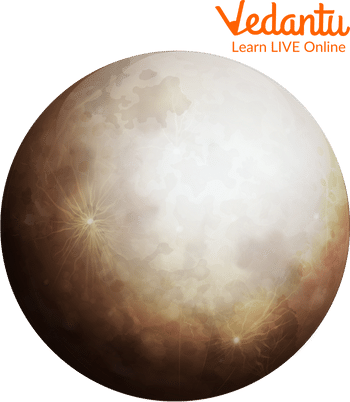




About Planet Mercury
Mercury is the smallest planet in the solar system now that Pluto has been declassified. Mercury has an iron core and a rocky surface. Compared to other rocky planets, like Earth and Mars, Mercury's iron core is enormous. As a result, Mercury has an extremely high mass relative to its size.
The craters on Mercury's barren surface are the result of asteroids and other things striking the planet. It resembles the moon of Earth a lot. Mercury rotates relatively slowly relative to the Sun and has almost little atmosphere. On Mercury, a single day is equivalent to almost 60 days on Earth. Mercury has some spectacular temperature swings because of its long day and thin atmosphere. These are some mercury facts for kids.

Solar System
Interesting Fact about Mercury
Here are some the interesting fact about mercury:
Caloris Basin is the name of a large crater on Mercury. This crater was created by a massive impact that created hills on the opposite side of the globe.
Mercury is an element that bears the planet's name. At one time, alchemists believed they could turn mercury into gold.
The Roman god Mercury inspired the planet's naming. As well as being the god of travellers and traders, Mercury served as a messenger to the gods.
More quickly than any other planet, Mercury orbits the Sun.
Astronomers in ancient Greece believed it to be two planets. They gave the one they observed at dawn the name Apollo and the one they observed at dusk the name Hermes.
Of all the planets, it has the least circular (orbitally) eccentric orbit.
These are some of the planet's mercury facts.
How Do We Know about Mercury?
There is proof that cultures like the Sumerians and Babylonians knew about the planet Mercury as early as 3000 BC. Early in the 1600s, Galileo used a telescope for the first time to see Mercury. Since then, many astronomers have contributed to our understanding of the planet.
Sending a spacecraft to investigate Mercury is highly challenging because the planet is so near to the Sun. The spacecraft is constantly being pulled downward by the gravity of the Sun, which means that stopping or slowing down at Mercury requires a lot of fuel. Mercury has already received two space probes.
In 1975, Mariner 10 became the first. Mariner 10 revealed Mercury's magnetic field and provided the first up-close images of the planet. MESSENGER was the following spacecraft. Between 2011 and 2015, MESSENGER orbited Mercury before it was destroyed on April 30, 2015. As Mercury lies inside the Earth's orbit, it is challenging to study from Earth.
As a result, whenever you attempt to see Mercury, you are also seeing the Sun. Mercury is almost completely hard to view due to the Sun's strong light. Because of this, Mercury is best observed soon after or just before the sun sets.

Planet Mercury
Summary
Mercury is not the hottest planet, despite being the one nearest to the Sun. It is the smallest planet in the Solar System, lacks seasons, has a thin atmosphere, is the most cratered planet, and experiences extreme temperature changes between day and night. Mercury doesn't have a moon, and because of its proximity to the Sun, it never will. It would take 18 Mercurys to be the same size as Earth because Mercury is roughly twice as big as Pluto. NASA's Mariner 10 was the first spacecraft to investigate Mercury; this took place in 1974. The Sun would appear three times as large in the sky from Mercury than it does from Earth.
FAQs on Mercury Facts for Kids
1. How can we compare Mercury to Earth?
Earth is substantially larger than Mercury. It approaches the moon's size much more closely. Its year is shorter, but its days are significantly longer. Even though the day is very lengthy, there is no air to breathe, and the temperature fluctuates greatly every day. In that it has a rough, stony surface like Earth's, Mercury is comparable. If you possessed a space suit and could withstand the severe temperatures, you could stroll around on Mercury.
2. Who discovered Mercury?
No one is responsible for giving Mercury its name or for its discovery. Since Mercury can be seen with the unaided eye, the ancients were well aware of it. The Mul. Apin tablets include one of the oldest documented sightings of Mercury. These observations are thought to have been made by a prehistoric Assyrian astronomer around the 14th century BC. "The flying planet" is how the name Mercury appears when translated from the language on those tablets.
3. Why is mercury toxic?
Depending on the type and amount, exposures to mercury can damage the nervous system, kidneys, liver, and immune system. Breathing mercury vapours can harm the nervous system, lungs, and kidneys. Mercury vapours can pass easily from the lungs to the bloodstream.









